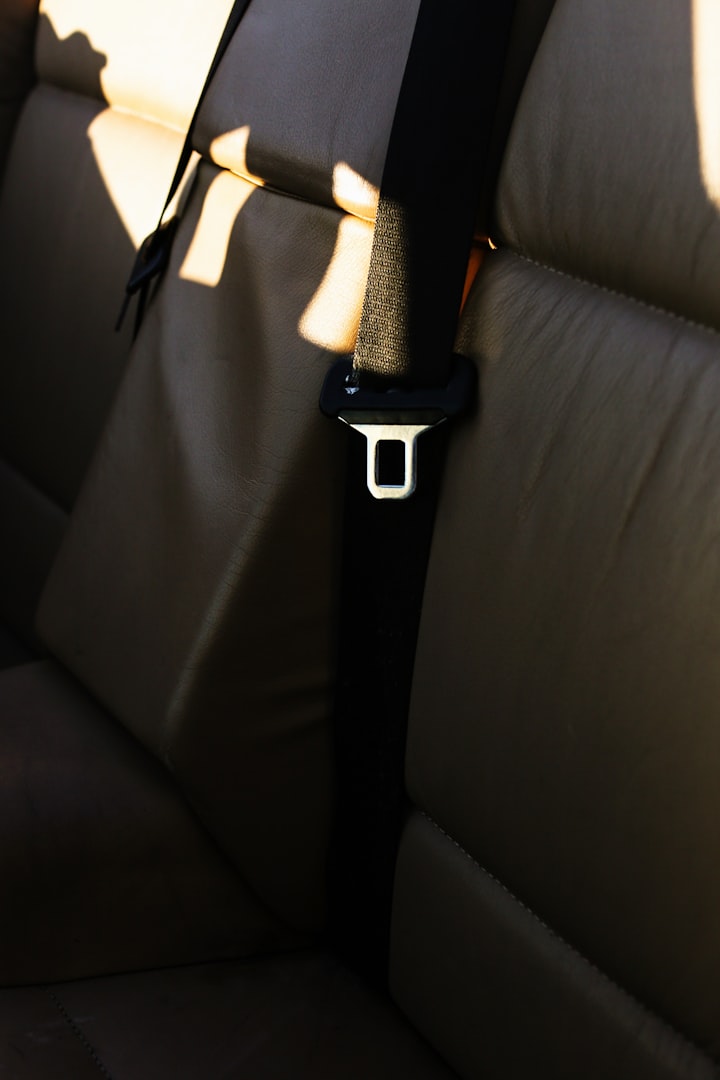Do Pickup Trucks Have Subpar Seat Belt Reminders?
Seat belt warnings make noise, but they can save you.

Some may argue that pickup trucks are just as safe as smaller vehicles. But others may disagree and say they lack safety amenities. Regarding vehicle safety, organizations often scrutinize the safety of pickup trucks, so they typically get low ratings.
A study conducted by various organizations found that pickup trucks have one of the lowest seat belt reminder compliance rates compared to other vehicle types. Since pickups are larger than sedans and crossovers, passenger safety is its usual issue. Let's see what the facts say about pickup truck safety features such as seat belt reminders. Do they work as well as they should?
Preventing deaths and injuries
Straps and tie-downs help ensure that the cargo won't shift in the truck bed in case of acceleration and sudden brake. The straps can be attached to the headache racks to secure the load and keep it in place safely. Seat belts work that way—but for the safety of drivers and passengers.
Seat belts were invented to save lives. They're a ground-breaking and beneficial piece of protection in case of accidents. Yet, some drivers and passengers do not want to feel restrained by them.
According to the national crash statistics, drivers and occupants of pickup trucks are less likely to buckle up. They occasionally forget to buckle up and continue driving off the lot. Wearing a safety belt can sometimes feel like a nuisance. Aside from taking a bit of your precious time, it's uncomfortable to use, especially when it feels tight and strangling.
The National Highway Traffic Safety Administration (NHTSA) reported that vehicle fatalities among unrestrained passengers increased by 14 percent between 2019 and 2020. Severe injuries and deaths continue to happen yearly because of the unbelted motorists involved in road accidents. In 2019, almost half of the people in either the driver's side or front passenger seats were killed in crashes. The Insurance Institute for Highway Safety (IIHS) conveyed that they were not buckled up for their safety.
Do people know the importance of seat belts?
Seat belts sometimes do not get their due since they have been around for so long. People tend to forget that it's the simplest yet most effective when it comes to car safety.
As vehicles modernize, automakers continue to add better truck accessories and improve the system for safety. Over the years, seat belts have evolved from basic straps to a highly engineered mechanism that performs much more than most passengers and drivers realize.
To help turn the deadly trend in road accidents, the IIHS launched a new test for seat belt reminder alarms in March. The IIHS evaluated 26 SUVs for the initial batch. The safety organization also found that only two have earned the top rating "Good" for the seat belt reminders. Ten pickup trucks have been evaluated, but only one made a "Good" rating.
According to national crash statistics, drivers and passengers of pickup trucks are less likely to buckle up than the drivers of other vehicles. An IIHS analysis says pickups should have more effective reminders, like alarms insistent enough to get people to buckle up. The noise from the alarms can get annoying. They can only be stopped if the drivers and passengers have worn their seat belts. Thus, it could increase seat belt use in pickups by 34 percent and prevent about 1,500 deaths annually.
Riding a pickup truck gives a false sense of security because of its size. Just because a pickup truck is larger than sedans and other vehicles—doesn't mean it's invulnerable to road accidents. You're still risking your life if you do not wear your seat belt correctly.
Seat belt system ratings
When IIHS tested ten pickups, only one met all the stricter seat belt requirements at the highest level—and that's Toyota Tundra. The compact pickup Hyundai Santa Cruz and the mid-size Nissan Frontier were among the tested but only earned "Acceptable" ratings. Although both vehicles met the IIHS criteria for the front seats, neither had a seat belt reminder system for the backseat.
The IIHS also included Toyota Tacoma and Ram 1500, which earned "Marginal" ratings. Chevrolet's Colorado and Silverado, Ford's F-150, Ranger, and Maverick received the institute's subpar remark to vehicles with a "Poor" rating. The seat belt reminder alarms on the five pickup models were present, but they're not loud enough and only last for less than 8 seconds.
The rating provided by the IIHS focuses on the performance of the front seat belt reminder systems and the availability of rear seat belt reminders. Consumer Report also has a Rear-Seat Safety Score. They evaluate the rear seat belt reminder performance, child safety features, head restraints, effective seat belt reminder system, as well as advanced seat belt and airbag availability.
Standards on seat belt reminders
According to William Wallace, the associate director for the safety policy of Consumer Reports, a seat belt is a practical and easy way to prevent a serious injury in a crash. He explained that combining lower seat belt usage is crucial, especially in some of the best-selling vehicles on the road, such as pickup trucks. That would show a clear opportunity to improve safety.
However, few people don't want to wear a seat belt. Some do, but they don't really mind the importance of buckling up for their safety. They unwillingly buckle up because they don't want to get a ticket.
Wallace added that seat belt reminders are supposed to be annoying. The drivers and passengers must properly use their seat belts to stop the noise. They make noise when an occupant is unbelted.
The Federal Motor Vehicle Safety Standards (FMVSS) on seat belt reminder alarms has a more lenient requirement than IIHS. The FMVSS governs how systems should operate, and they only oblige seat belt reminder systems for drivers.
The IIHS evaluates the audible alert's duration, timing, and volume. The institute primarily focuses on the driver and front-seat passenger, but a standard has been added for rear-seated passengers. It is specifically beneficial when a passenger unbuckles during a trip.
The IIHS claims that there is still room for improvement with seat belt reminder systems based on the early assessment. They expect the car and truck manufacturers to improve their safety features by making software adjustments.
Buckle up for safety
To sum it up, the persistent seat belt reminder systems should be a gold standard not only for pickup trucks but in all types of vehicles. Although it generates an irritating noise, it should not be viewed as an inconvenient feature. Motorists must consider it a valuable safety measure to avoid injuries and fatalities. If seat belt reminder alerts are impossible to ignore, they're effective in getting people to buckle up.
About the Creator
Jen Demkin
Hi, I'm Jen from 4WheelOnline. My fascination with vehicles started in my childhood. I like cars more than dolls. I enjoy writing about automotive industry news, vehicle maintenance tips, and more.






Comments
There are no comments for this story
Be the first to respond and start the conversation.